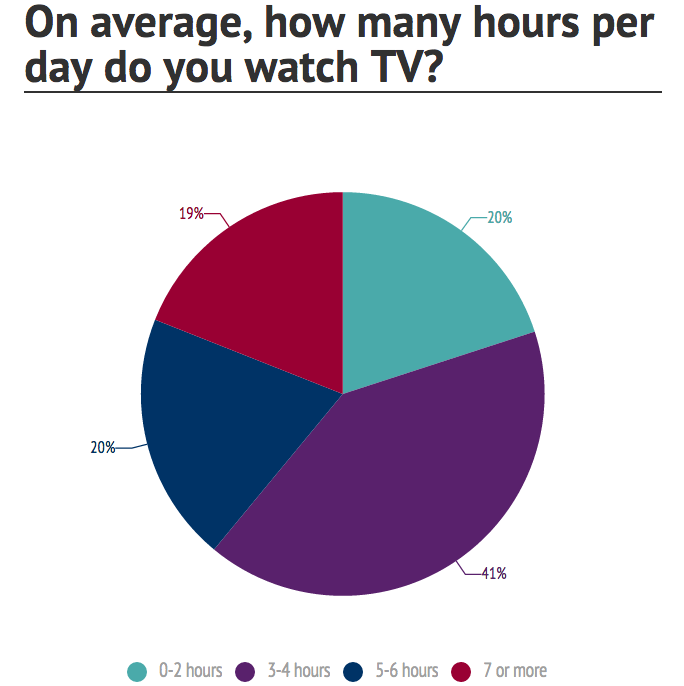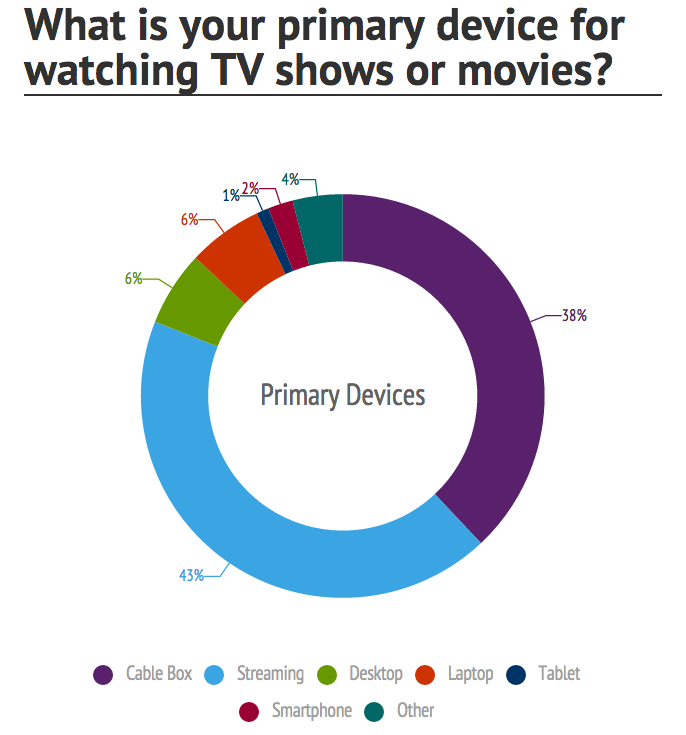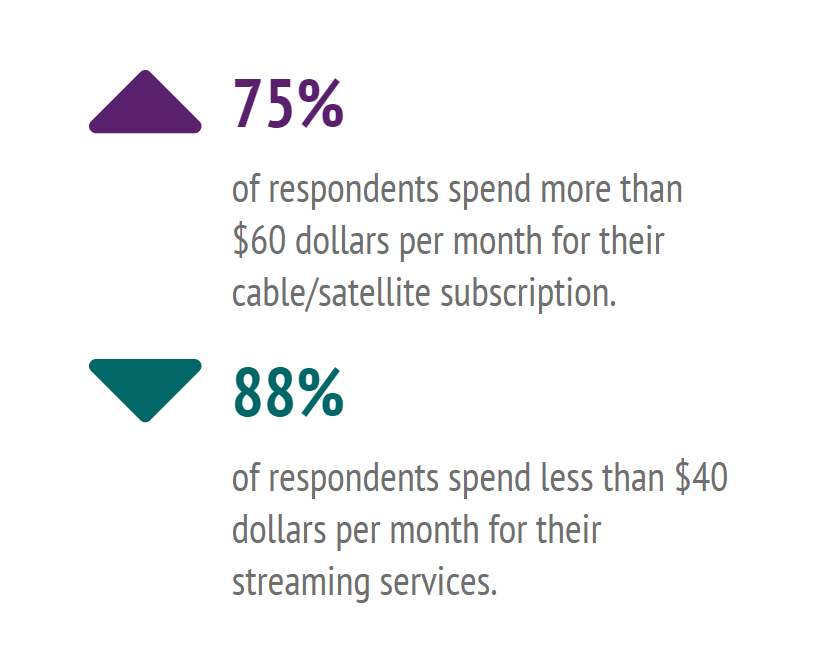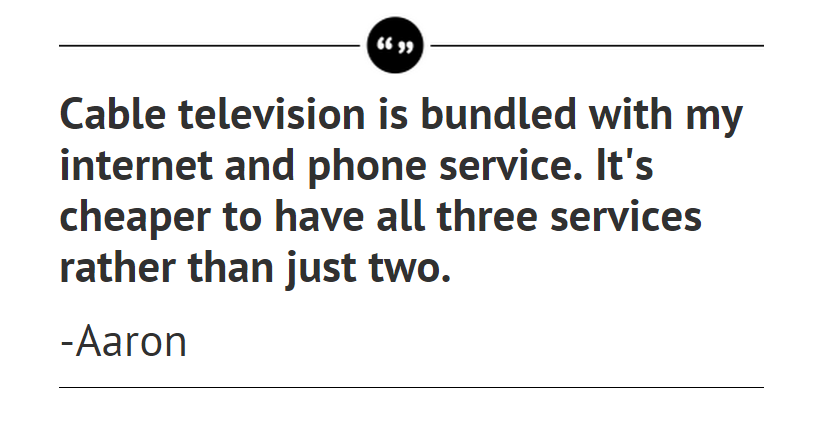The Evolving Role of Television in Your Lives
It’s hard to picture a world without television. The television has become the center of the American living room. For the millions of families who tune in every night, television is a big part of how we connect and learn about the rest of the world. Now streaming services are changing the television landscape. They’re allowing us to watch content whenever and wherever we’d like, expanding TV viewing far beyond the living room. Even with these drastic changes, it’s hard to imagine a future without television in some form.
As part of our recent community survey on TV watching, we asked members of our community about their television watching habits. Over 2,500 of you responded and the data told us a lot about the evolving role of television in our lives.
Television Is Still Hugely Influential
The most obvious trend from the data is that Betabounders watch a lot of TV! While 20% of survey respondents said they watched two hours or less of TV (in some form or another) per day, a vast majority (80%) of our community watches more than two hours, with 19% watching more than seven hours of video content per day.

If these numbers are any indication of the ongoing relationship between television and its viewers, it’s that there seems to be a special bond between the stories that are told on screen and the audiences that tune in to watch. It goes without saying that television is a big part of our daily lives, and that isn’t likely to change anytime soon. Whether it’s talking about Game of Thrones theories with your coworkers or binge-watching Orange is the New Black with your friends, we still find plenty of reasons to keep watching.
How We’re Watching TV is Changing
While members of our community may watch a lot of television, how they’re watching it is changing. As we discussed last week, 91% of survey respondents use streaming services to watch their favorite TV shows. It’s not only the sources that are changing, but the devices we use to watch our shows are changing too.

The number of respondents who use their cable box as their primary means of watching video content is only 38%. That’s 5% lower than streaming services. So while 69% of Betabounders report still having a cable subscription, cable is obviously losing its grip on the American living room. Trends are shifting away from the cable box and moving towards mobile and streaming devices, which offer more options to viewers.
Cost is Also a Factor
In general, cable packages are more expensive than standalone streaming services. While buying multiple streaming services can start to add up, being forced to buy pricey cable subscriptions just to get access to a few of your favorite channels can be frustrating. This dynamic has encouraged people to walk away from cable and embrace the more affordable, piecemeal streaming options.

Over 75% of respondents who subscribe to cable or satellite pay more than $60 a month for their services, with over 42% shelling out over $100. When compared to streaming (with 53% of subscribers paying less than $20 and 80% paying less than $40 a month), it’s easy to see how streaming can appeal to budget-conscious consumers.
It’s worth noting that many cable/satellite television packages are often ‘bundled’ into internet and phone plans. This form of packaging is a factor for many customers considering dropping their cable subscriptions. If a customer is already paying $50 to $70 for high speed internet, it’s not too much of a stretch to add a TV subscription. And while a high speed internet connection is necessary to use streaming services, most respondents didn’t consider that to be part of the cost of their streaming services.

The costs associated with TV programming are (arguably) the most important factor behind the trend towards streaming. By offering online access to content (instead of through more expensive cable contracts), consumers have a low-cost alternative to viewing their favorite TV programming. Ironically, cable companies are often the ones providing the high speed internet that’s allowing consumers to hop online and subscribe to the streaming services that are cable companies’ top competition.
Streaming is Forcing Cable to Evolve
Innovation is often accompanied by some level of reorganization in adjacent industries. New technologies often create ways for companies to provide the same service but more efficiently and at a lower price. The growing popularity of streaming seems to be one of these innovations, leaving corporate giants in the television industry in the dubious position of restructuring themselves to fit this new landscape.
A bit of competition might not be the worst thing for cable providers at this point. Long-standing regional cable monopolies have lead to poor customer service and plummeting consumer reviews for big cable. Streaming services are disrupting that status quo by applying pressure on cable companies to be more innovative, lower prices, and provide better service. The development of streaming has brought back a competitiveness that has otherwise been lacking in the TV industry. Who knows? Maybe the trend towards streaming will actually do more to save cable by revitalizing a stagnant industry than it will do to kill it.
Learn more about how streaming is trending for Betabounders!